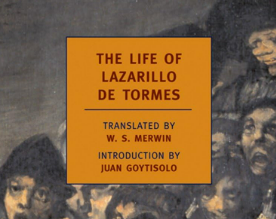Bibliography
byBibliography listings often reveal more than just sources—they map the intellectual landscape that surrounds a text. In the case of Lazarillo de Tormes, the bibliography reflects a century-long conversation across academic disciplines, national borders, and literary frameworks. From early 20th-century philological studies to mid-century cultural analyses, these works emphasize the novel’s transformation from a once-censored book to a celebrated cornerstone of Spanish literature. Scholars such as Francisco Ayala and Marcel Bataillon dissected not only the structural and thematic innovations of the novel but also its subversive commentary on 16th-century Spain. Their work draws attention to Lazarillo’s unique narrative voice—one that blends satire with sincerity and offers a window into the life of the marginalized. Through this lens, the bibliography serves as a mirror of evolving literary criticism: a shift from purely textual analysis to broader sociopolitical contextualization.
Among the more influential figures in this collection, Bataillon’s research is particularly notable for interpreting Lazarillo not as a mere tale of misfortune, but as a deliberate challenge to dominant moral and religious ideologies of its time. His scholarship helped to reposition the work as a foundational text in the picaresque tradition, a genre characterized by its roguish protagonists and episodic structure. Likewise, Francisco Ayala’s contributions delve into interpretive nuances, suggesting that readers have long underestimated the narrative’s complexity. These insights encouraged deeper exploration into the protagonist’s reliability, his moral ambiguity, and the interplay between survival and dignity. Jose Caso Gonzalez adds further dimension with investigations into linguistic choices and their relation to period-specific dialects and idiomatic expressions, allowing readers to hear Lazarillo in his own voice rather than through modern reinterpretation.
Eduard Boehmer and Americo Castro extend the discussion by situating Lazarillo within comparative frameworks, aligning its narrative innovations with those of Cervantes and other European authors. Castro, in particular, emphasizes the novel’s sociological resonance, linking it to broader themes of identity, exclusion, and religious hypocrisy in Golden Age Spain. These readings serve not only to enrich literary understanding but also to contextualize the work within a society grappling with class stratification and spiritual conflict. Other figures, such as Frank Wadleigh Chandler and H. J. Chaytor, highlight the international scholarly reception of the novel, reflecting how Lazarillo’s themes of poverty, resilience, and cleverness resonate across cultures and historical moments. Their inclusion in the bibliography underscores that Lazarillo is not just a Spanish artifact—it is a global literary touchstone.
The chronological spread of the bibliography also illustrates the novel’s shifting scholarly reception. In earlier studies, attention was largely focused on authorship debates and manuscript variants, while later research pivoted toward literary theory, narrative technique, and sociohistorical context. This shift mirrors broader changes in the humanities: from positivist scholarship to interpretive and interdisciplinary approaches. It also demonstrates Lazarillo’s adaptability as a text—how it continues to inspire new readings and theoretical applications, from Marxist critique to postmodern deconstruction. Such academic flexibility affirms the novel’s status as more than a historical curiosity; it is a living text that continues to ask uncomfortable questions about power, morality, and human survival.
In practical terms, this bibliography serves not only scholars but also educators and students seeking to deepen their understanding of Lazarillo de Tormes. The variety of lenses—literary, historical, philological, and ideological—offer multiple entry points into the text, each uncovering different facets of meaning. These resources collectively form a toolkit for unpacking the novel’s enduring significance. Whether one approaches Lazarillo as a satire, a social critique, or a literary experiment, the works cited here ensure that such explorations are well-grounded and richly informed. In sum, the bibliography is not an afterthought—it is a curated archive of critical legacy, demonstrating how one slim, anonymous novel sparked a century-spanning dialogue on the very nature of storytelling, truth, and human resilience.

